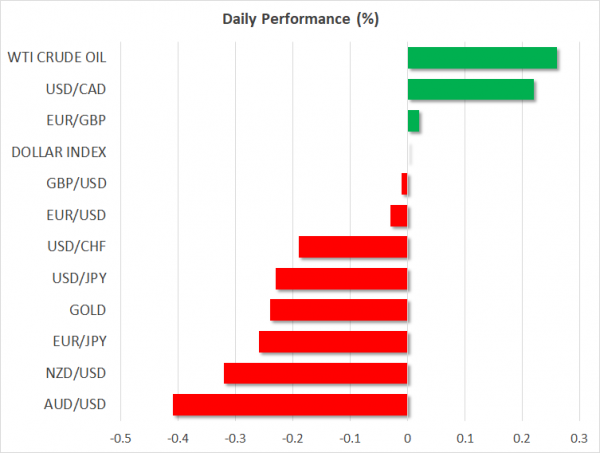- Trade tensions continue to simmer as China pushes back on US demands
- But two sides agree to hold more talks, keeping risk-off in check
- Safe-haven currencies such as the yen and the Swiss franc rise along with US government bonds
US threatens new tariffs as talks with China stall
US and Chinese negotiators failed to break the deadlock over trade in their talks last week as China refuses to change its laws to enact the reforms agreed in months-long negotiations. The White House’s chief economic advisor, Larry Kudlow, indicated on Sunday that any final deal would require China to sign up to “very strong” enforcement steps for the changes its agreed to.
Further piling the pressure on China were fresh threats by President Trump to impose additional tariffs on Chinese products. Trump instructed his administration on Friday to look into imposing duties on all remaining imports from China. However, China is still not budging, with officials saying, “no one should expect China to swallow bitter fruit that harms its core interests”.
The stand-off has raised the prospect of the ongoing trade war being even more protracted, which risks severely disrupting international trade and harming global growth at a time when many economies around the world are stuck in low gear mode.
Risk-assets slide, yen and Swiss franc shine
The safe havens yen and Swiss franc were the main winners on Monday as risk aversion prevailed in the markets. The Australian dollar was the biggest loser against the Japanese currency, slipping towards last week’s 4-month low of 76.34 yen. The US dollar also struggled, easing to 109.70 yen, though against a basket of currencies, the greenback was flat, with the dollar index trading around 97.35.
Traders also rushed into the Swiss currency amid the renewed worries about whether the US and China will be able to hammer out a trade agreement in the coming weeks. But optimism was in short supply, pushing the dollar to a 3½-week low of 1.0091 francs.
Equities started the week on the backfoot, with sharp losses recorded in Asia, while US stock futures pointed to Wall Street opening more than 1% lower today. The only good news from last week’s negotiations, and which is what’s preventing a more aggressive sell-off is the two sides agreeing to hold more talks.
However, with China yet to announce its own retaliatory measures against Trump’s decision to raise tariffs on $200 billion worth of Chinese imports from 10% to 25%, markets are on standby for further volatility in the coming days.
Quiet day ahead; Clarida speech eyed
Other than developments on the trade front, the rest of the day is looking relatively quiet. Investors will be watching a speech by Fed Vice Chairman, Richard Clarida at 13:10 GMT for any comments on the US economic outlook following the latest escalation in trade frictions. Remarks by the Bank of Canada’s Deputy Governor, Timothy Lane, may also attract attention as odds of a rate cut fell significantly after Friday’s much stronger-than-expected employment numbers for April.
The Canadian dollar jumped to a more than one-week high if C$1.3376 on the data before retreating slightly. Other majors were steady, with the euro marginally lower at $1.1228 and the pound flat at just above the $1.30 level.
The pound is being supported by Friday’s solid Q1 GDP figures even as cross-party talks to end the Brexit stalemate do not appear to be going anywhere. The latest reports are claiming UK PM, Theresa May, is planning to reopen talks with the EU on the declaration of the future relationship to secure changes that would appease the Labour party, suggesting there’s still a chance the two parties can reach a deal.














